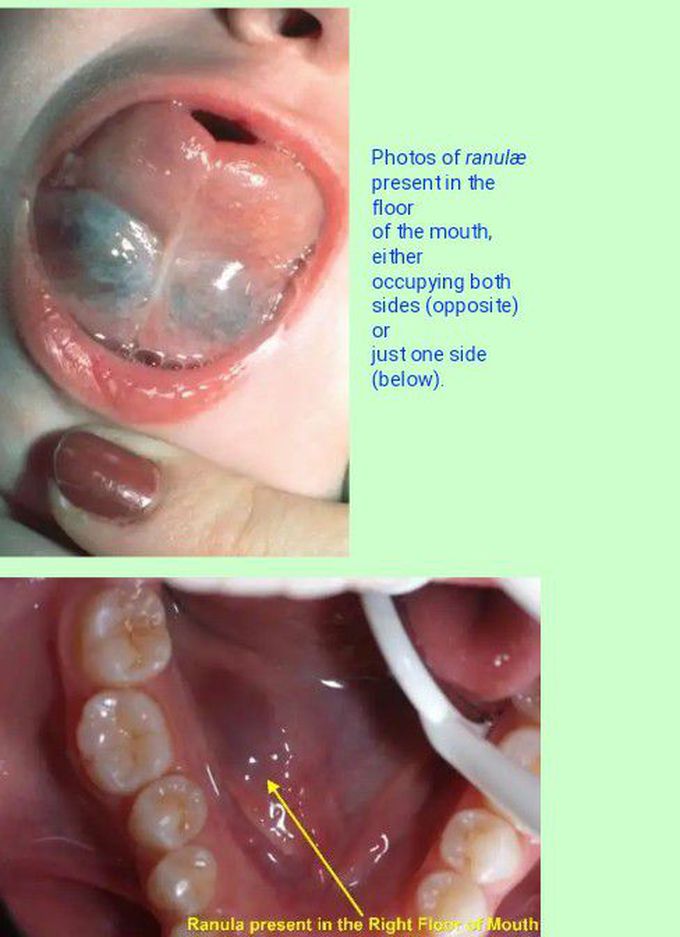


Ranulas / Ranulæ & Their Treatment
Ranula A ranula (Latin word rana, meaning frog) describes a blue, translucent swelling in the floor of the mouth, reminiscent of the underbelly of a frog. It is an uncommon type of mucus-filled cyst (mucocœle) arising from the sublingual or submandibular salivary glands in the floor of the mouth. The structure is essentially the same as other mucocœles, though there is usually an epithelial lining (i.e. lined by ‘skin’). Ranulæ are usually either one-side or the other in the floor of the mouth and 2 - 3 cm in diameter. Occasionally, they extend across the whole of the floor of the mouth. A ranula is most commonly observed as a bluish cyst located below the tongue. It may fill the mouth and raise the tongue. Typically, these are painless masses that do not change in size in response to chewing, eating or swallowing but may interfere with these functions (speech or chewing / eating). Occasionally, pain may be involved. Ranulæ are rare. In one study of 1303 salivary gland cysts, only 42 were ranulæ. The reported male-to-female ratio of occurrence is 1:1.3. Ranulæ tends to occur most frequently in the second and third decades of life, with an age range of 3 - 61 years.

